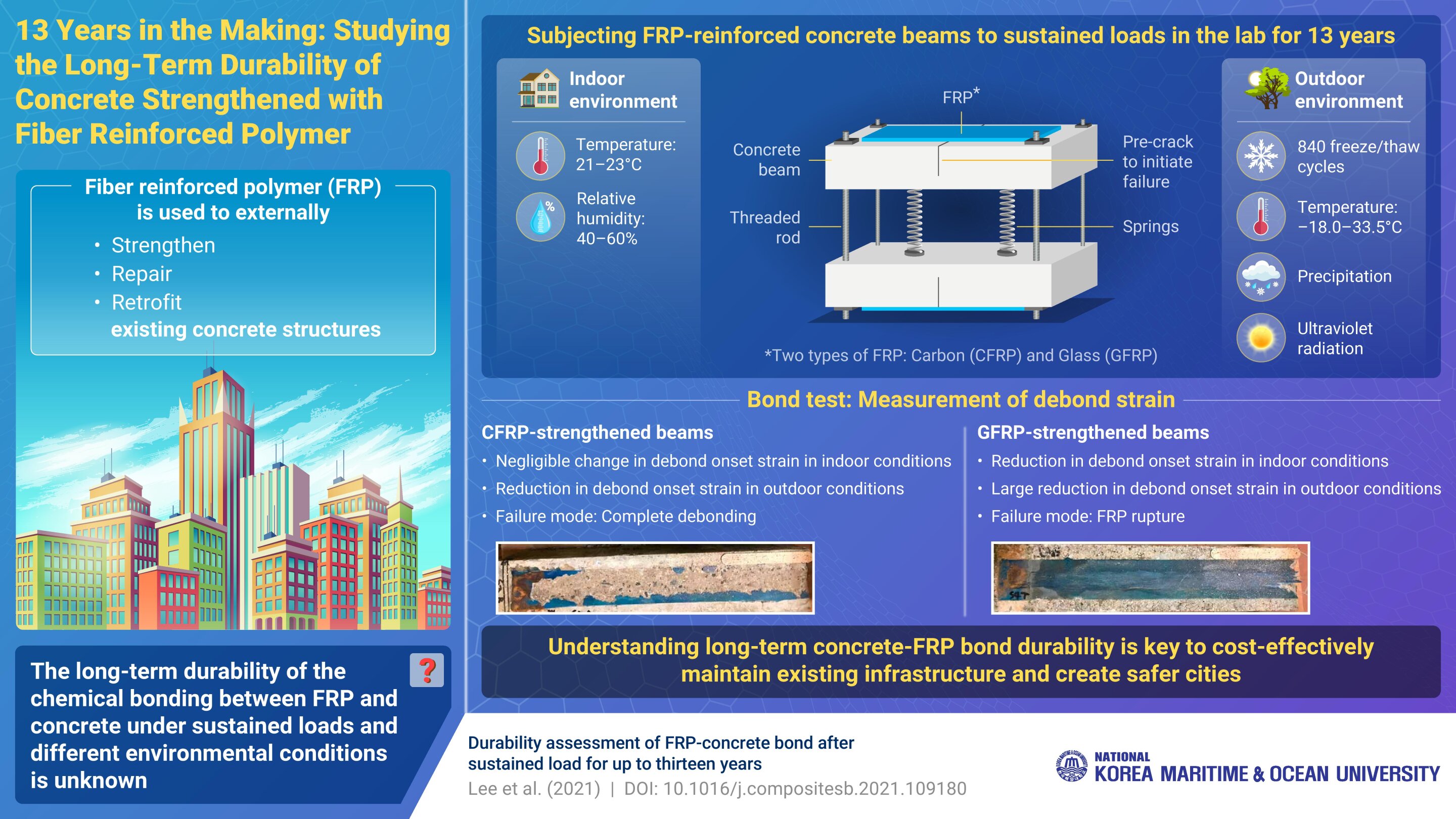How long can fiber reinforced polymer sustain concrete structures? Scientists answer

In modern society, the majority of our infrastructure (buildings, bridges, tunnels, etc.) is made of aging concrete. A recently developed cost-effective method of sustaining this infrastructure involves an external coating with fiber-reinforced polymer (FRP) composites. But is this a temporary patch or a durable solution? A 13-year-long study published in Composites Part B finally answers this question, taking us one step closer to the wide-spread utilization of this solution.
In the FRP-strengthening of concrete, glass or carbon fiber–reinforced polymer (GFRP or CFRP) composites are bonded onto concrete using an epoxy adhesive. These sheets provide additional support and strengthen the concrete by protecting them from harsh environmental conditions, such as high moisture levels and temperatures. But these same environmental conditions can potentially degrade the concrete-FRP bond as well, causing the FRP protection system to fail prematurely.
Prof. Jaeha Lee from Korea Maritime and Ocean University, a lead researcher in the 13-year study, says, “The information available on FRP-concrete bond behavior following sustained loads in different environments is very limited, particularly for periods beyond two years.”
The researchers tested both CFRP and GFRP systems under various indoor and outdoor environmental conditions for changes in a parameter called the debond onset strain. This is a measure of the deformation that occurs before failure; larger strains usually forewarn imminent failure.
The researchers found that environmental conditions had a significant impact on bond behavior. At the end of 13 years, larger reductions in debond strains were observed in outdoor beams than indoor beams. Further, the bond behavior varied between materials: changes in debond strain were negligible in indoor CFRP beams, while in outdoor GFRP beams, there was a notable decrease.
Prof. Lee stresses the importance of such tests for future use, stating: “If the long-term durability of concrete-FRP interfaces is evaluated, the use of this strengthening system is expected to increase with minimum investment. This will be great for affordably maintaining a safer city by minimizing the risk of collapse or damage of existing structures.”
Jaeha Lee et al, Durability assessment of FRP-concrete bond after sustained load for up to thirteen years, Composites Part B: Engineering (2021). DOI: 10.1016/j.compositesb.2021.109180
Provided by
National Korea Maritime and Ocean University
Citation:
How long can fiber reinforced polymer sustain concrete structures? Scientists answer (2021, October 15)
retrieved 15 October 2021
from https://techxplore.com/news/2021-10-fiber-polymer-sustain-concrete-scientists.html
This document is subject to copyright. Apart from any fair dealing for the purpose of private study or research, no
part may be reproduced without the written permission. The content is provided for information purposes only.
For all the latest Technology News Click Here
For the latest news and updates, follow us on Google News.

